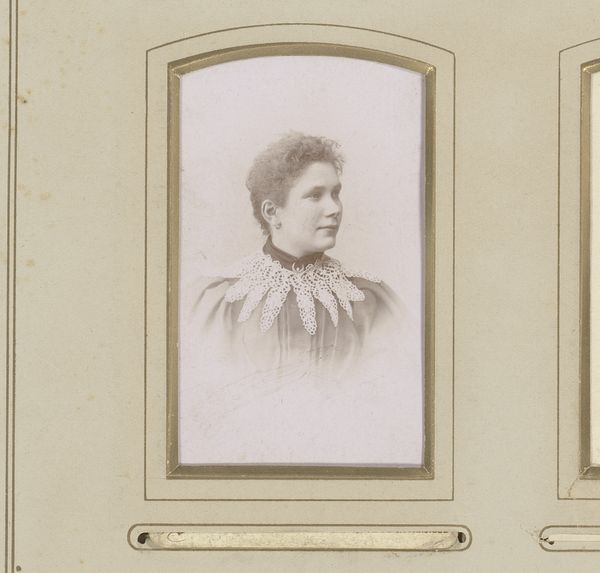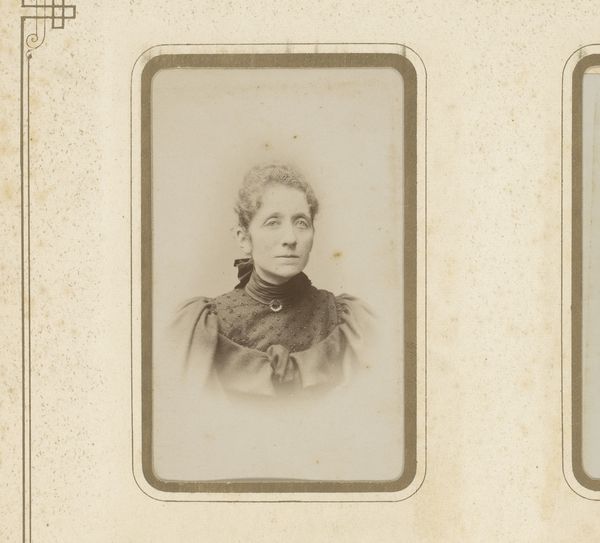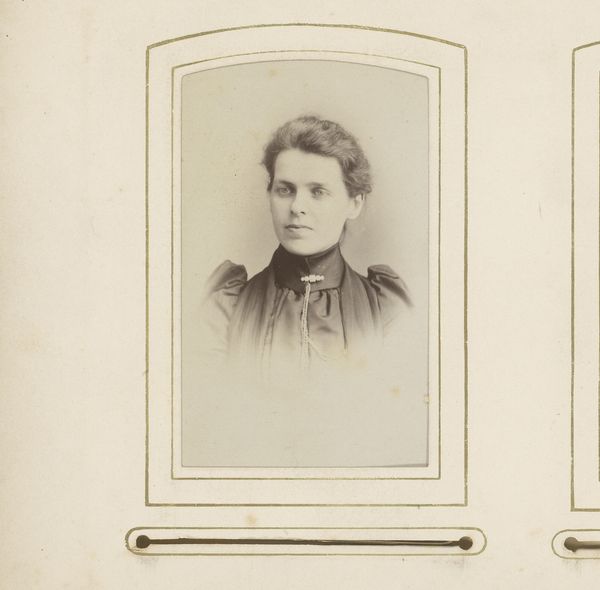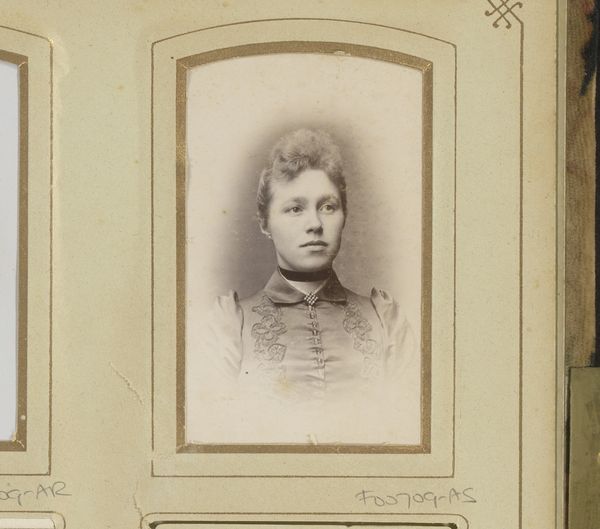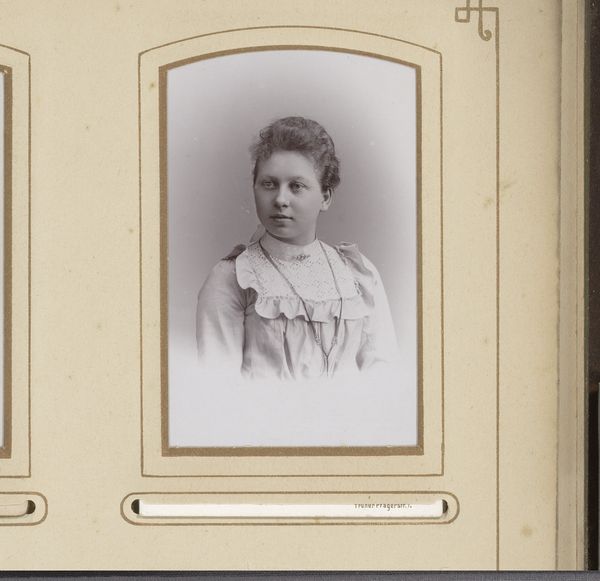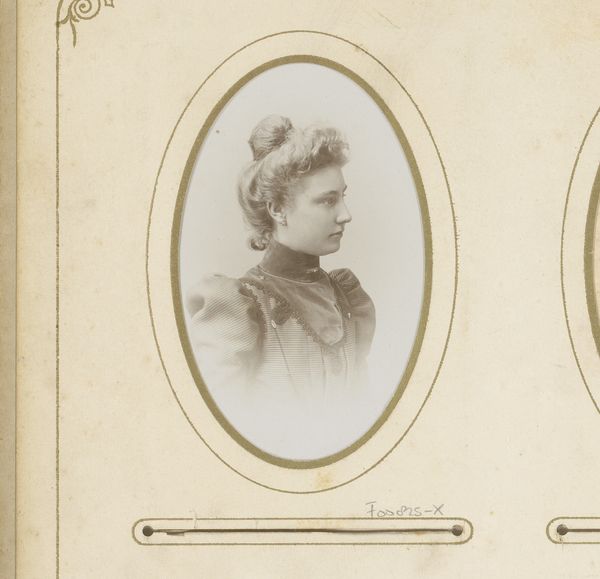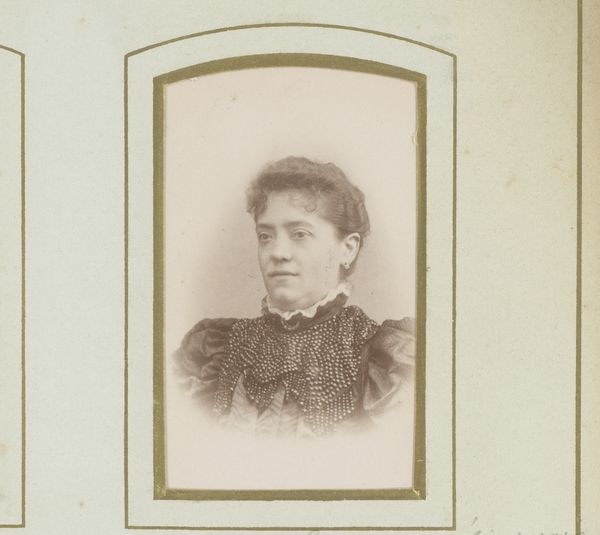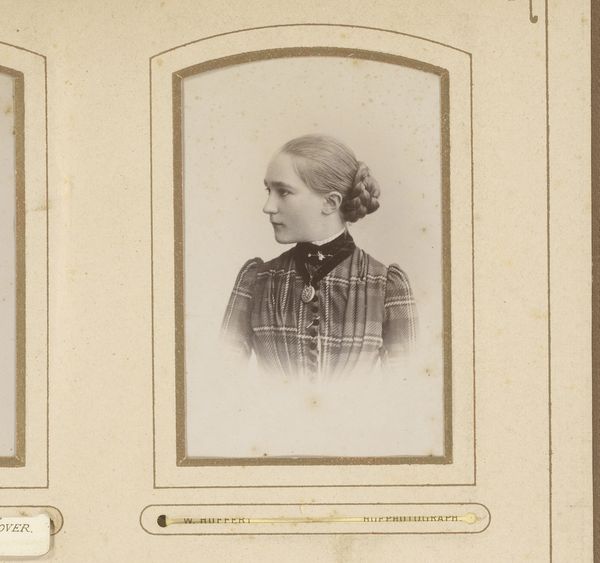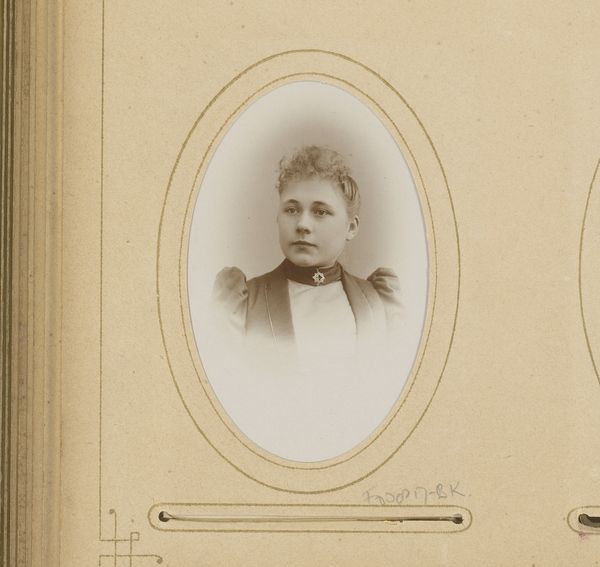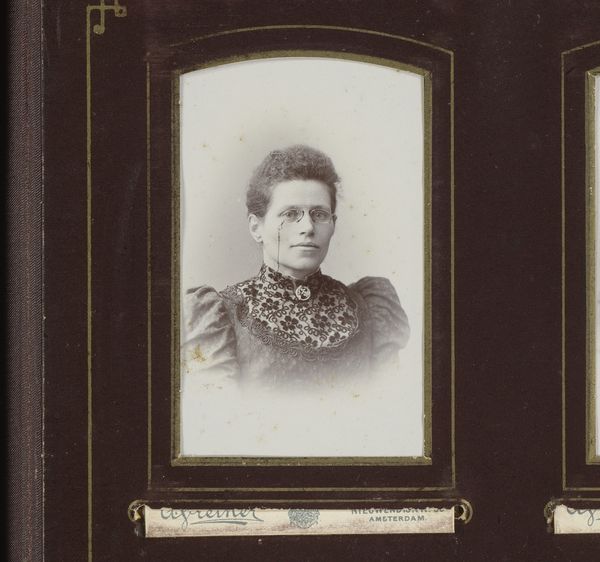
photography
#
portrait
#
photography
#
19th century
#
realism
Dimensions: height 82 mm, width 53 mm
Copyright: Rijks Museum: Open Domain
Curator: This photograph, entitled "Portret van een jonge vrouw," resides here at the Rijksmuseum and dates from between 1892 and 1913. It comes to us from the studio of Adolphe Zimmermans. Editor: There's an incredible stillness about her, like she's caught between eras. A certain fragility too, accentuated by the monochrome palette and the subtle blurring around the edges. Curator: It's interesting that you say that. Consider how portraiture, especially photography at this time, functioned as a tool for constructing identity and memory. The woman’s gaze, though directed to the side, seems intentionally averted from something specific. It suggests a degree of interiority, a private world shielded from the camera's intrusion. Editor: True, there's this wonderful tension. The photograph itself tries to fix her—a specimen pinned under glass—yet she manages to elude that capture. Her expression, reserved and thoughtful, hints at depths the photographer couldn’t, or maybe didn't want to, grasp. I feel I’m looking at a life in potentia. Curator: The muted tones actually enhance the symbolic resonance. Consider the very dark dress that almost dissolves into the shadows, drawing our attention instead to her face. In portraiture of this era, dress codes signaled social status. By subduing color, and perhaps by photographic darkroom practices, it draws our focus elsewhere. It guides us toward seeing the psychological over the societal. Editor: It is lovely. I think one cannot help projecting forward the viewer's own personal fantasies. It allows the viewer, me in any case, to engage in something other than critical analysis: namely, emotional empathy. She feels so completely alive somehow. Curator: It certainly sparks something beyond intellectual engagement. This portrait, beyond being a historical artifact, reminds us that even through static images, people carry profound stories. It speaks to the complexities inherent in human experience, whether intended by the photographer or only seen through a glass dimly today. Editor: I agree, that tension—between the formal attempt to classify and fix someone and the ultimate, ineffable unknowability of any individual—is what makes it compelling still. It invites me to sit with the image longer. To resist simply moving on.
Comments
No comments
Be the first to comment and join the conversation on the ultimate creative platform.
